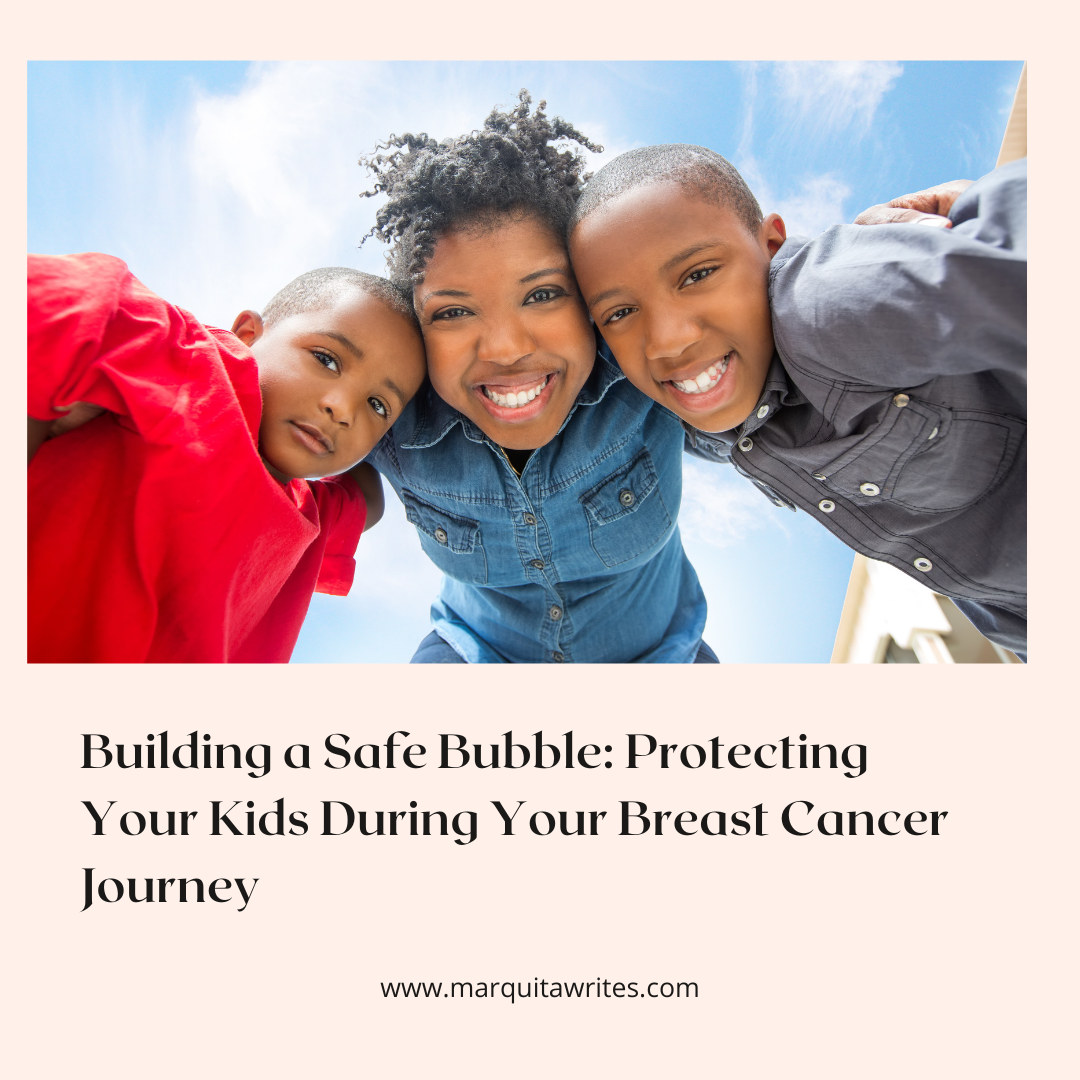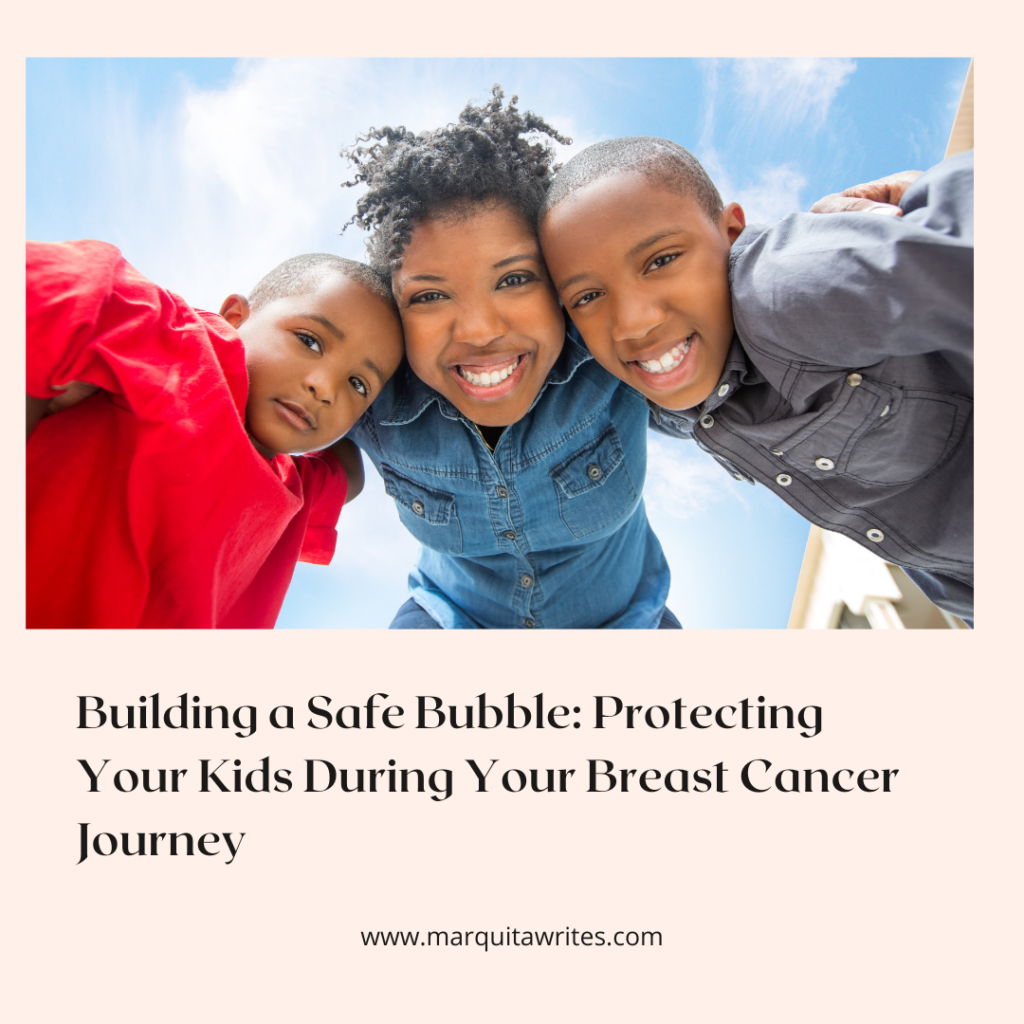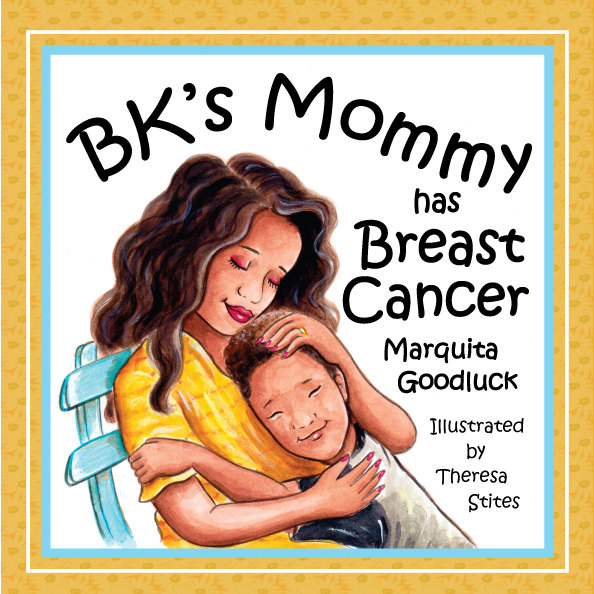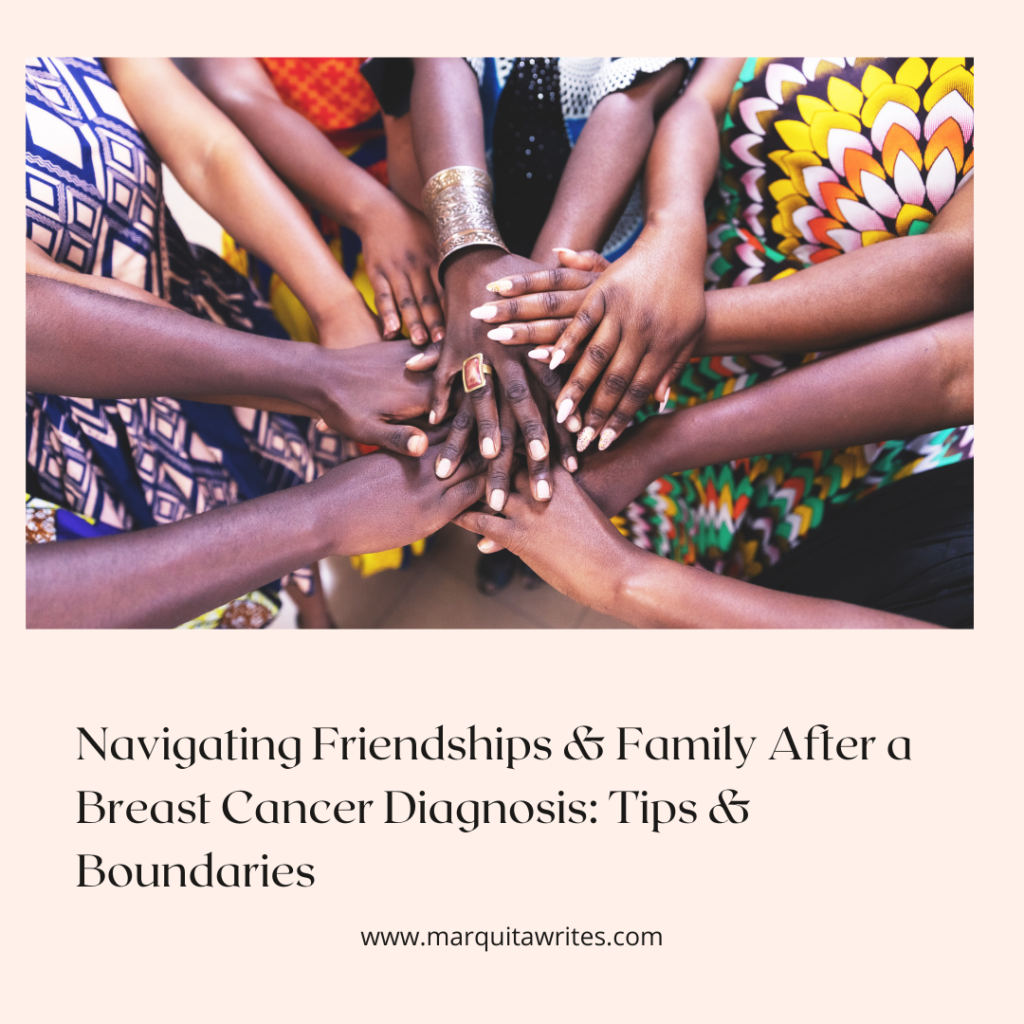
Building a Safe Bubble: Protecting Your Kids During Your Breast Cancer Journey

When I received my breast cancer diagnosis, my world tilted on its axis. But amidst the whirlwind of appointments, treatments, and emotions, my biggest concern were my children. They were 7, 9, and 12 at the time – old enough to sense something was wrong, but still young and vulnerable. My heart ached at the thought of them being scared, confused, or hearing information before I was ready to share it.
My biggest fear wasn’t just my own health; it was the potential for others, however well-meaning, to inadvertently say something that would frighten my kids or tell them more than I felt they could handle. I knew I needed to create a “safe bubble” around them, a space where they felt secure, informed in an age-appropriate way, and loved unconditionally.
Through trial and error, and a lot of heartfelt conversations, we navigated this challenging time as a family. Here are five key tips that helped me protect my children and foster open communication during my breast cancer journey:
1. Honesty with Age-Appropriateness: Knowing What and When to Share.
I firmly believe in being honest with children, but the key is tailoring the information to their understanding. With my 7-year-old, we kept it simple: “Mommy isn’t feeling well and needs to see doctors more often. Sometimes I’ll be tired.” For my 9 and 12-year-olds, I could share a bit more, explaining that I had a “lump” that needed to be taken care of by doctors. We avoided overly medical jargon and scary details. The goal was to inform them without overwhelming them. We answered their questions honestly and simply, always reassuring them of our love and that we would get through this together.
2. Controlling the Information Flow: Your Story, Your Timing.
This was crucial for creating that safe bubble. I had open and direct conversations with close family and friends. I explicitly told them what I had shared with my children and what I wasn’t ready for them to know. I used phrases like, “We’ve only told the kids that Mommy isn’t feeling well right now, so please avoid mentioning the word ‘cancer’ or any specific treatments to them.” Most people were incredibly understanding and respectful of our wishes. This helped prevent my children from overhearing potentially frightening conversations or getting information from someone else before I had the chance to talk to them.
3. Designating a Safe Harbor: Someone They Can Trust and Talk To.
I identified a few trusted adults – a close friend and my sister – who I knew my children felt comfortable with. I spoke to these individuals privately, explaining the situation and letting them know they could be a safe person for my kids to turn to if they had questions or worries they didn’t feel comfortable bringing to me or their dad. I also made sure my children knew they could talk to these individuals. It provided an extra layer of support and reassurance for them, knowing there were other caring adults in their lives who were aware and available.
4. Open Communication Channels: Creating a Space for Questions and Feelings.
We made a conscious effort to create an open and safe environment for our children to ask questions and express their feelings. We reassured them that it was okay to feel sad, scared, or confused. We had regular family check-ins where they could share anything that was on their minds. Sometimes, it was just about feeling heard and validated. We also used age-appropriate books and resources to help them understand what was happening in a gentle way.
5. The Power of Storytelling: Why “BK’S Mommy Has Breast Cancer” Was Born.

One of the most powerful tools I found for communicating with my children was through storytelling. I realized there was a need for a simple, reassuring book that could help young children understand breast cancer from a mommy’s perspective. This realization led me to write “BK’S Mommy Has Breast Cancer.” My aim was to create a foundation for open communication, to answer some of the basic questions children might have, and to reassure them that they are loved and that the family will face this together. The book became a wonderful starting point for conversations and helped my children feel more comfortable and less afraid.
Navigating a breast cancer journey with children is undoubtedly challenging. But by being honest, controlling the flow of information, providing additional support, fostering open communication, and utilizing resources like “BK’S Mommy Has Breast Cancer,” you can create a safe and loving environment for your kids, protecting their hearts and minds during a difficult time.
Want a gentle and effective way to start the conversation with your young children about your breast cancer diagnosis?Pick up a copy of my book, “BK’S Mommy Has Breast Cancer,” today! It’s a heartfelt story designed to open the lines of communication and reassure your little ones that even during challenging times, love and family remain strong.



